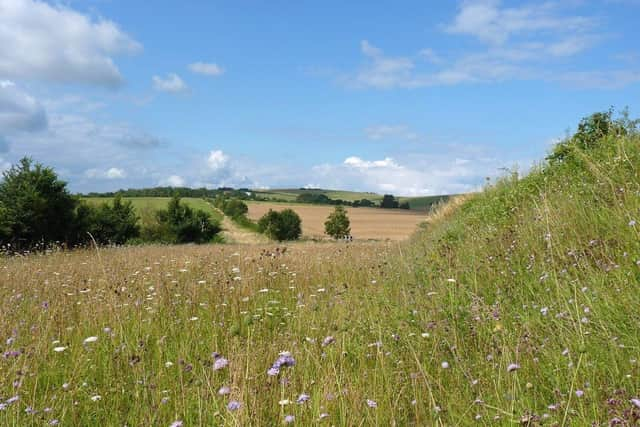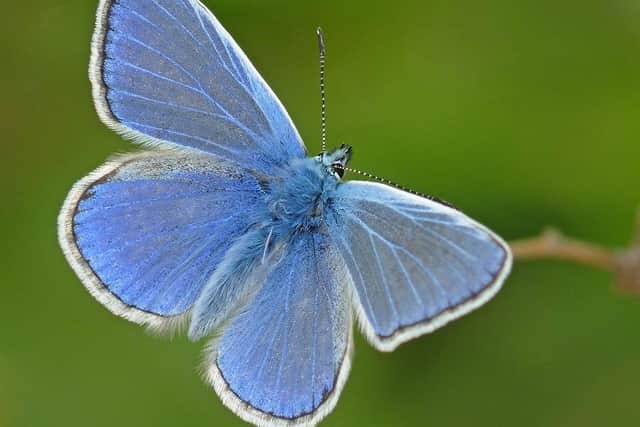Notable Road Verges in West Sussex: It doesn’t come better than roadside ‘nature reserve’ north of Worthing
and live on Freeview channel 276
A stunning plot of flourishing flora and fauna north of Worthing is to be officially designated as a Notable Road Verge by West Sussex County Council.
“Road verges don’t come better than this,” says wildlife expert Neil Hulme, who has been carrying out butterfly surveys at the verge off Long Furlong in Patching.
Advertisement
Hide AdAdvertisement
Hide AdThe verge will become the 85th Notable Road Verge in West Sussex, with a distinctive oak marker post installed to ensure it receives appropriate management.


Neil, a consultant ecologist and butterfly expert, works closely with the county council, South Downs National Park Authority and many landowners to help improve habitats for the benefit of butterflies and a wealth of other wildlife.
He gave the verge a rave report following a summer of research: “Road verges don’t come better than this. It was like walking across a mini nature reserve, which is what many verges have the potential to be, forming vital green corridors across the landscape.
“The results of my butterfly surveys here are spectacular, as is the flora, which includes beauties such as the bee orchid. My count of 424 butterflies included 20 species, the highlights being 107 small blue, which is quite rare and very localised in distribution, 222 common blue and 21 brown argus.
Advertisement
Hide AdAdvertisement
Hide Ad“Mating pairs of these three species were seen and many other females were observed laying eggs on plants, which would be removed if cut too early in the year.


“Butterflies are highly sensitive indicators of habitat health. Where they occur in high numbers and diversity, it means that many other aspects of our fauna and flora will be flourishing.”
The existing NRVs make a combined total of 51km, covering an area equivalent to 293 football pitches.
Joy Dennis, county cabinet member for highways and transport, said: “We are very fortunate to have glorious road verges such as this in the county and this shows, in stunning fashion, how our rural cutting regime can produce this kind of display in places, where road safety allows.”
Advertisement
Hide AdAdvertisement
Hide AdDeborah Urquhart, county cabinet member for environment and climate change, said: “I couldn’t agree more with Neil’s comments – his pictures are stunning. Some of our roadside verges are home to a number of scarce insect and plant species, provide spectacular wildflower displays and are testament to our commitment to the Pollinator Action Plan.”
Neil was also enthusiastic about the condition of the NRV at Kithurst Hill, near Storrington, which forms part of a larger site managed by the South Downs National Park Authority.
He said: “This must be the only road verge in the UK where you can see both the very rare Duke of Burgundy butterfly and the iconic round-headed rampion flower, known as the Pride of Sussex.”
Please note there is no safe parking near the Patching verge and part of the reason for the flourishing flora and fauna is the lack of footfall, so people are urged to keep to the public footpaths.